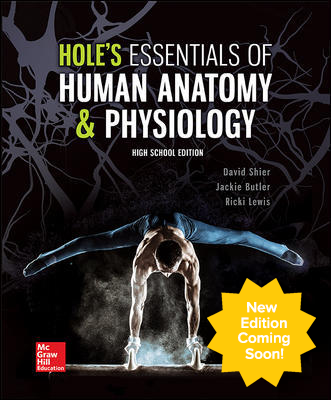DAVID SHIER has more than thirty years of experience teaching anatomy and physiology, primarily to premedical, nursing, dental, and allied health students. His interest in physiology and teaching began with a job as a research assistant at Harvard Medical School from 1976-1979. He completed his Ph.D. at the University of Michigan in 1984, and served on the faculty of the Medical College of Ohio from 1985-1989. He began teaching at Washtenaw Community College in 1990. David has recent experience in online course delivery, including recording lectures for flipped classrooms. He has also been interested in the relationship between pedagogy and assessment, and the use of tools traditionally associated with assessment (e.g. lab quizzes) as pedagogical tools, often associated with group activities.
JACKIE BUTLER’s professional background includes work at the University of Texas Health Science Center conducting research about the genetics of bilateral retinoblastoma. She later worked at Houston’s M. D. Anderson Hospital investigating remission in leukemia patients. A popular educator for more than thirty years at Grayson College, Jackie has taught microbiology and human anatomy and physiology for health science majors. Jackie Butler received her B.S. and M.S. degrees from Texas A&M University, focusing on microbiology, including courses in immunology and epidemiology.
RICKI LEWIS’s career communicating science began with earning a Ph.D. in Genetics from Indiana University in 1980. It quickly blossomed into writing for newspapers and magazines, and writing the introductory textbook Life. Since then she has taught a variety of life science courses and has authored the textbook Human Genetics: Concepts and Applications and books about gene therapy, stem cells, and scientific discovery. She is a genetic counselor for a large medical practice, teaches a graduate online course in “Genethics” at Albany Medical College, and writes for Medscape Medical News and Rare Disease Report. She writes the popular DNA Science blog at Public Library of Science and is a frequent public speaker. Ricki is a strong advocate for the rare disease community, specializing in communication and bringing families together.
DIGITAL AUTHORS
LESLIE DAY earned her B.S. in Exercise Physiology from UMass Lowell, an M.S. in Applied Anatomy & Physiology from Boston University, and a Ph.D. in Biology from Northeastern University. She currently works as an Associate Clinical Professor and Associate Chair in the Department of Physical Therapy, Movement and Rehabilitation Sciences at Northeastern University with her main teaching role in upper level Gross Anatomy and Neuroanatomy courses, but still loves teaching her introductory anatomy course. She has received five teaching awards at the University's, including the coveted University Excellence in Teaching Award. Her current research focuses on the effectiveness of different teaching pedagogies, including the flipped classroom and various technology. She brings her love for anatomy and quest for trying new technology into the classroom to make for a dynamic evidence-based teaching style that is friendly to all students.
JULIE PILCHER began teaching during her graduate training in Biomedical Sciences at Wright State University, Dayton, Ohio. She found, to her surprise, that working as a teaching assistant held her interest more than her research. Upon completion of her Ph.D. in 1986, she embarked on her teaching career, working for many years as an adjunct in a variety of schools as she raised her four children. In 1998, she began full-time at the University of Southern Indiana, Evansville. Her work with McGraw-Hill began several years ago, doing reviews of textbook chapters and lab manuals. More recently, she has been involved in content development for LearnSmart. In her A&P course at USI, she has also used Connect and has enjoyed the challenge of writing some of her own assignments. When the opportunity arose to become more involved in the authoring of digital content for McGraw-Hill, she could not pass it up. Based on her own experience, students are using more and more online resources, and she is pleased to be part of that aspect of A&P education.
HIGH SCHOOL CONTRIBUTORS
DARREL JAMES grew up in Bend, Oregon and received a B.S. in Biology from Pacific University and an M.S. in Marine Science from Oregon State University. He has taught high school for 31 years, and presently teaches a range of science courses, including AP Biology, pre-AP Biology, anatomy and physiology, and human biology. He has also served as the science department chairperson for Beyer High School in Modesto, CA. He loves showing students the interworking of the human body. Darrel uses the human body to link difficult concepts together in order for students to obtain a deeper understanding.
ERIN HUIZINGA has spent more than 20 years as an educator who has developed rigorous, relevant curricular experiences for high school students. Erin has designed specialized programs that allow students to develop as scientists with an emphasis on real-world applications. Erin has been involved with health science career academies since 2005, teaching anatomy and physiology as part of an integrated curriculum focused on medical and health sciences. Through these highly collaborative and innovative programs, she has been able to implement research-based strategies that directly relate to improving student achievement.
